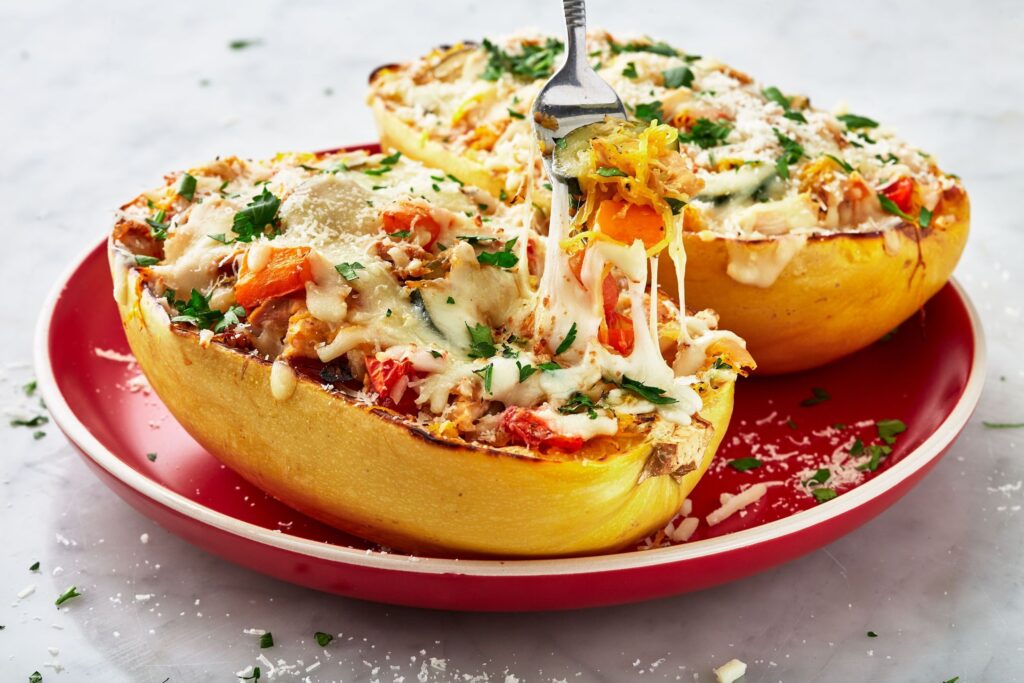Delicious Spaghetti Squash: A Healthy and Flavorful Side Dish

Introduction
Looking for a healthy and flavorful side dish to accompany your meals? Look no further than spaghetti squash! This versatile vegetable is not only delicious, but it also offers numerous health benefits. In this article, we will explore the wonders of spaghetti squash, how to cook it, and some mouthwatering recipes to try.
Health Benefits of Spaghetti Squash
Spaghetti squash is a nutrient-packed vegetable that is low in calories and high in fiber. It is an excellent source of vitamins A and C, as well as potassium and manganese. Additionally, it is rich in antioxidants and can help support a healthy immune system. Incorporating spaghetti squash into your diet can aid in weight management and promote overall well-being.
How to Cook Spaghetti Squash
Cooking spaghetti squash is a breeze! Start by preheating your oven to 400°F (200°C). Carefully cut the squash in half lengthwise and scoop out the seeds. Drizzle the inside with olive oil and sprinkle with salt and pepper. Place the halves face down on a baking sheet and bake for 45-50 minutes, or until the flesh is tender. Once cooled, use a fork to scrape the flesh into spaghetti-like strands.
Delicious Spaghetti Squash Recipes
There are endless possibilities when it comes to cooking with spaghetti squash. Here are a few delectable recipes to get you started:
- Spaghetti Squash with Marinara Sauce: Top your spaghetti squash strands with your favorite marinara sauce, sprinkle with Parmesan cheese, and bake for a few minutes until heated through. Voila! A healthier alternative to traditional pasta.
- Spaghetti Squash Stir-Fry: Sauté your spaghetti squash with a medley of fresh vegetables, such as bell peppers, onions, and zucchini. Add your choice of protein and season with soy sauce and garlic for a flavorful and nutritious meal.
- Spaghetti Squash Carbonara: For a creamy and indulgent twist, toss your spaghetti squash with a mixture of eggs, grated cheese, cooked bacon, and peas. Heat gently until the sauce thickens, and savor every bite.
Tips and Tricks for Perfect Spaghetti Squash
To ensure your spaghetti squash turns out perfectly every time, keep these tips in mind:
- Choose the right squash: Look for a spaghetti squash that feels heavy for its size and has a firm, unblemished skin.
- Don't overcook: Be sure to check the tenderness of the flesh with a fork while baking. Overcooked squash can become mushy.
- Get creative with toppings: Experiment with different sauces, herbs, and spices to add variety and flavor to your spaghetti squash dishes.
Conclusion
Spaghetti squash is a fantastic alternative to traditional pasta and a delightful addition to any meal. Its health benefits, ease of cooking, and versatility make it a must-try vegetable for both seasoned chefs and home cooks. So why not give it a try and enjoy a healthier and tastier side dish today?
F.A.Q.S.
1. Can I microwave spaghetti squash?
Yes, you can microwave spaghetti squash. Simply pierce the skin with a fork, place it in a microwave-safe dish, and cook on high for about 10-12 minutes, or until tender.
2. How long does spaghetti squash last in the fridge?
When stored properly in the refrigerator, cooked spaghetti squash can last for up to 5 days.
3. Can I freeze cooked spaghetti squash?
Absolutely! Cooked spaghetti squash freezes well. Simply let it cool, place it in an airtight container or freezer bag, and store it in the freezer for up to 3 months.
4. What are some alternative toppings for spaghetti squash?
Get creative with your toppings! Some delicious alternatives to traditional marinara sauce include pesto, alfredo sauce, or even a simple olive oil and garlic mixture. You can also add roasted veggies, grilled chicken, or shrimp to enhance the flavor.